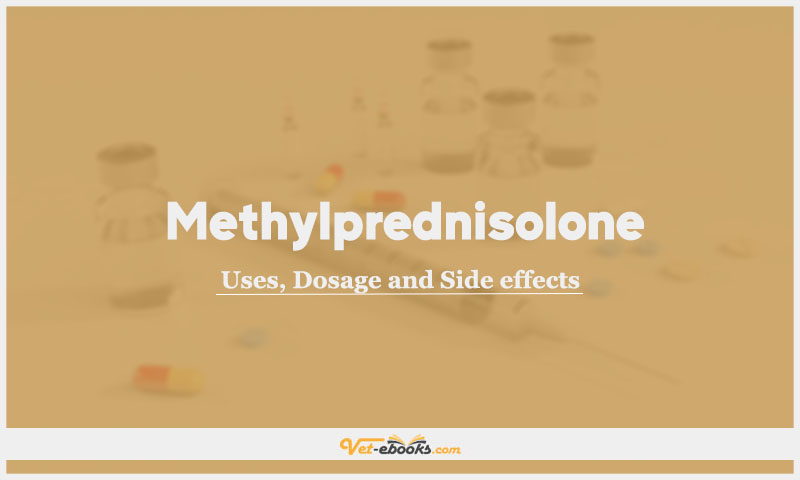Methylprednisolone In Dogs & Cats: Uses, Dosage and Side Effects

Overview
- DNA transcription modification induces cellular metabolism changes, causing anti-inflammatory, immunosuppressive, and anti-fibrotic effects.
- Additionally, it functions as an antagonist of antidiuretic hormone (ADH) in canines.
Uses of Methylprednisolone
- The anti-inflammatory substance in question exhibits a potency that is five times more than that of hydrocortisone, and a potency that surpasses prednisolone by 20%.
- 0.8 mg of methylprednisolone is equivalent to 1 mg of prednisolone.
- The oral administration of methylprednisolone is appropriate for alternate-day dosing.
- The utilisation of steroids in the treatment of shock and severe spinal cord injury is a subject of contention within the medical community, with a significant number of professionals opting against their administration.
- The administration of steroids has a quick drop in efficacy following the occurrence of shock or injury, but the negative effects of their use remain consistent and potentially significant.
- It is recommended to gradually reduce the dosage to the minimum effective level.
- It is recommended to gradually reduce the dosage of steroids while terminating chronic therapy in animals.
Dose of Methylprednisolone in Dogs and Cats
Dogs:
- Inflammation: initially 1.1 mg/kg i.m. (methylprednisolone acetate depot injection) q1–3wk or 0.2–0.5 mg/kg p.o. q12h.
- Hypoadrenocorticism (acute crisis): 1 mg/kg i.v. once daily until oral supplement started.
- Immunosuppression: 1–3 mg/kg p.o. q12h reducing to 1–2 mg/ kg p.o. q48h.
Cats:
- Asthma: 1–2 mg/kg (depot injection) i.m. q1–3wk.
- Inflammation/flea allergy: 5 mg/kg i.m. (depot injection) every 2 months or 1 mg/kg p.o. q24h reducing to 2–5 mg/cat p.o. q48h.
Drug Dosage Calculator
You Should Give:
Side Effects of Methylprednisolone in Dogs and Cats
- Prolonged administration leads to the inhibition of the hypothalamic-pituitary axis and results in the degeneration of the adrenal glands.
- The use of glucocorticoids has catabolic effects, resulting in both weight loss and cutaneous atrophy.
- Prolonged administration can lead to development of iatrogenic hyperadrenocorticism.
- The occurrence of vomiting and diarrhoea may be observed, potentially leading to the development of gastrointestinal ulcers.
- Glucocorticoids have the potential to elevate glucose levels in urine and reduce the levels of serum T3 and T4.
- Impaired wound healing and prolonged recovery from infections may manifest as observed clinical outcomes.
Contraindications of Methylprednisolone in Dogs and Cats
- Do not use it in pregnant animals.
- Systemic corticosteroids are generally contraindicated in patients with renal disease and diabetes mellitus.
Some Notes:
- There is an increased risk of GI ulceration if used concurrently with NSAIDs.
- Hypokalaemia may develop if amphotericin B or potassium-depleting diuretics (furosemide, thiazides) are administered concomitantly with corticosteroids.
- Insulin requirements are likely to increase in patients taking glucocorticoids.
- The metabolism of corticosteroids may be enhanced by phenobarbital or phenytoin and decreased by antifungals (e.g. itraconazole).
Tip
Do You Want To Increase Your Veterinary Knowledge and Practical Skills?
You Can Now Browse and Download +3000 Books For Veterinary Professionals & Students Online.
Download Veterinary Books




















